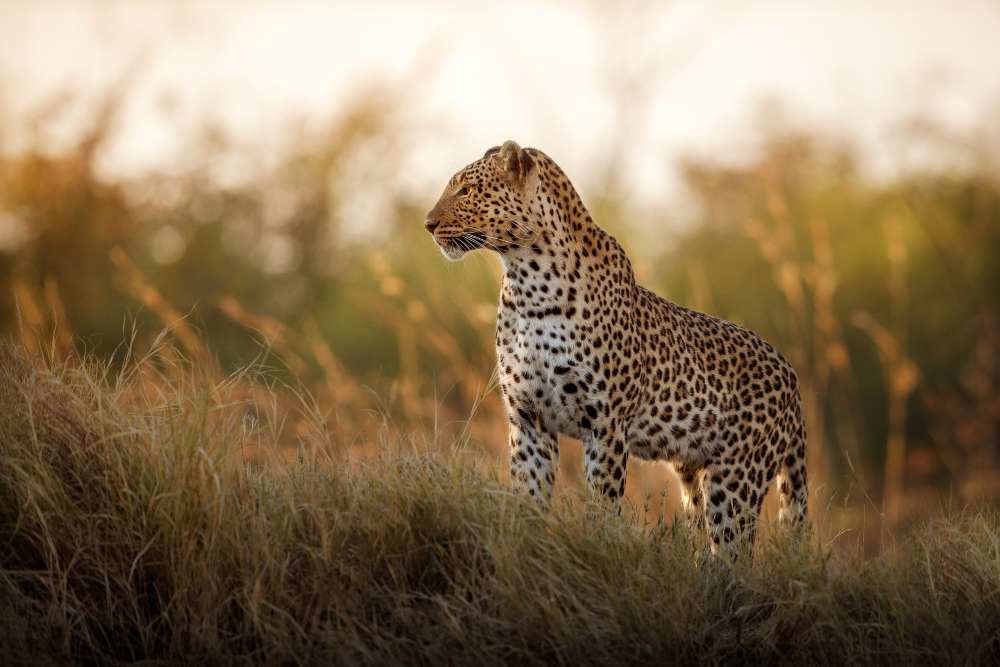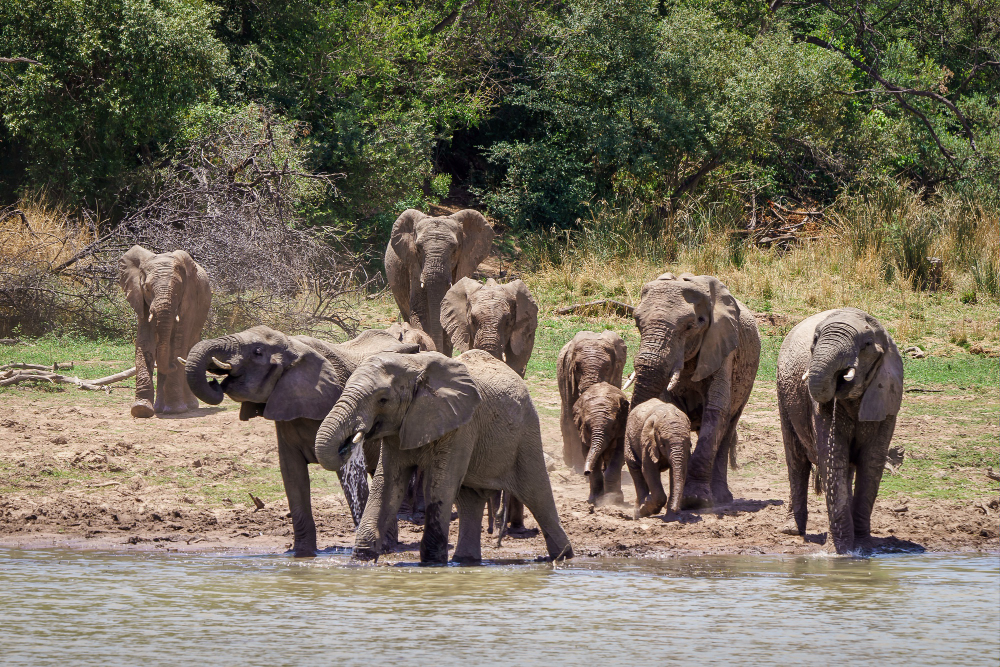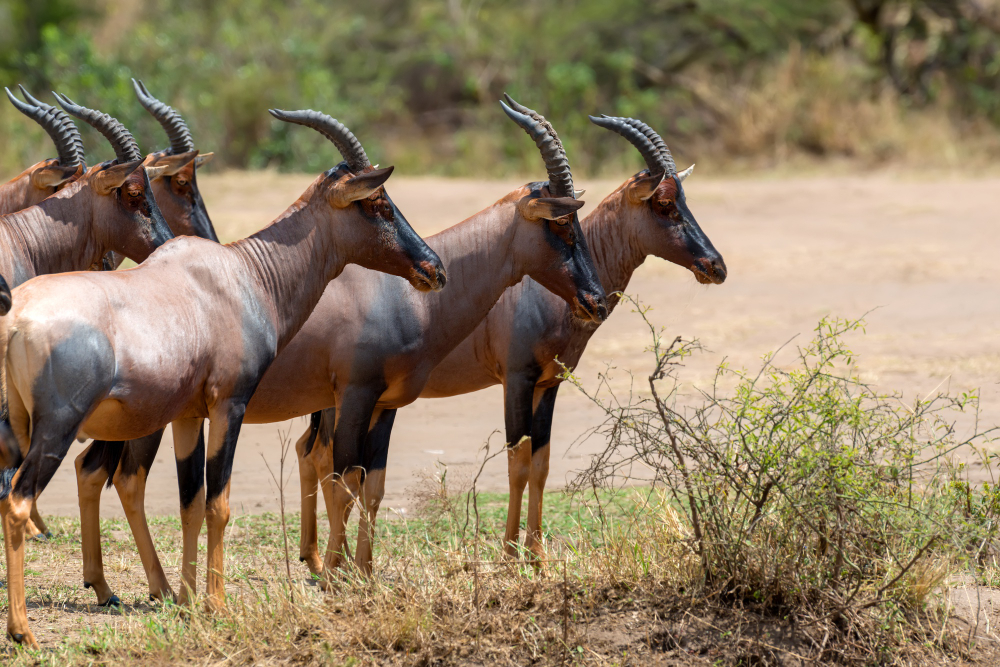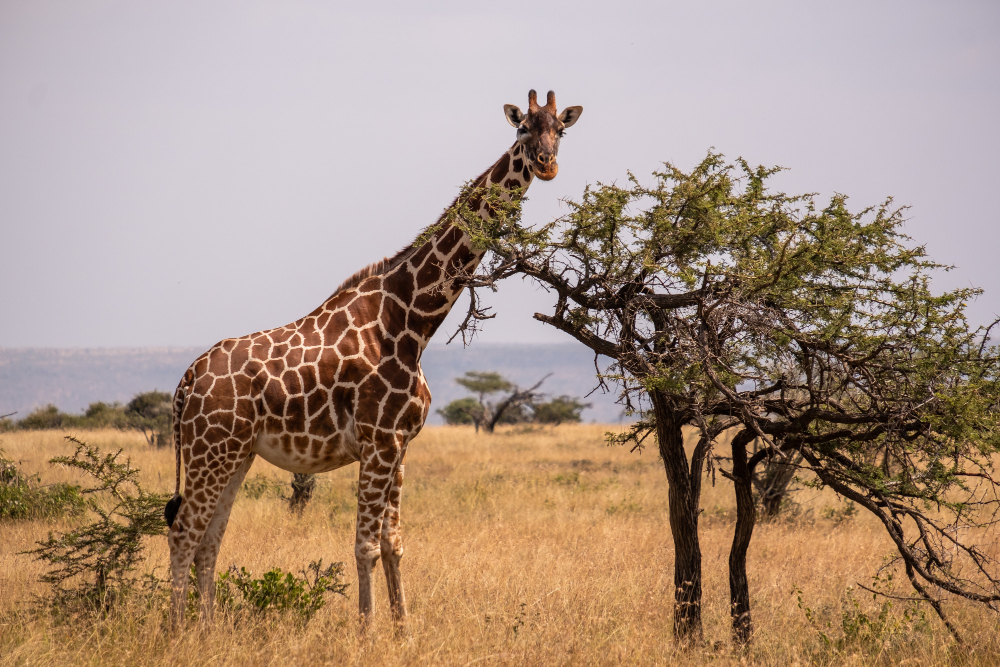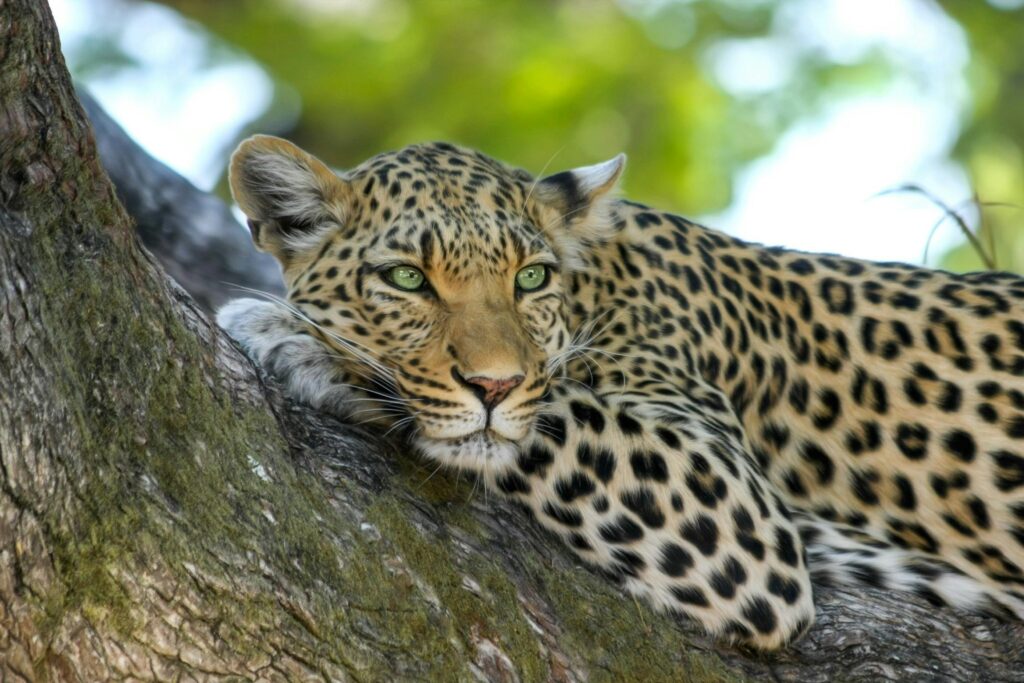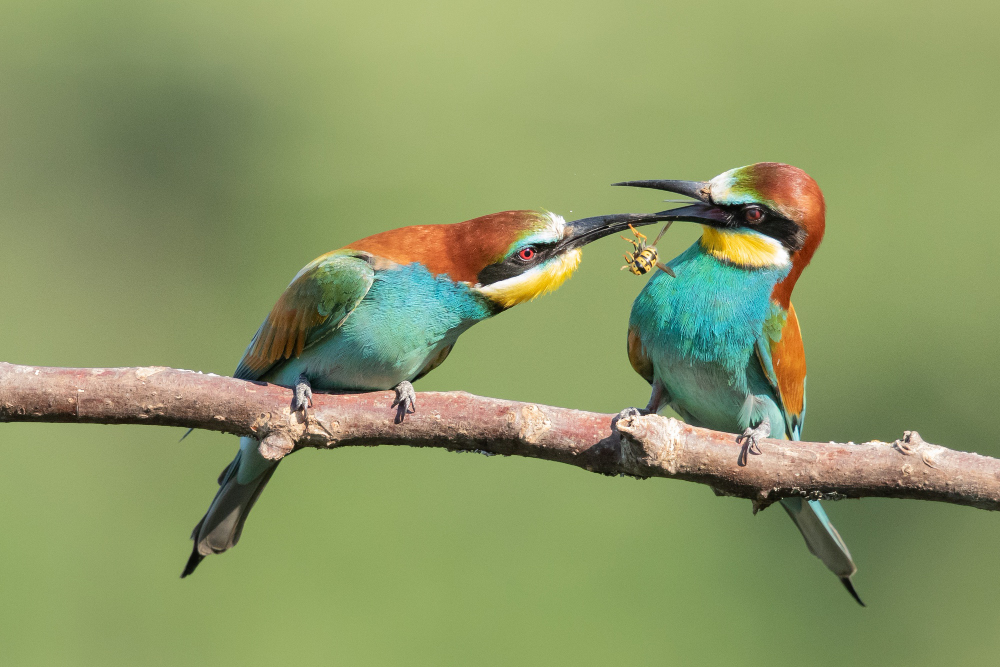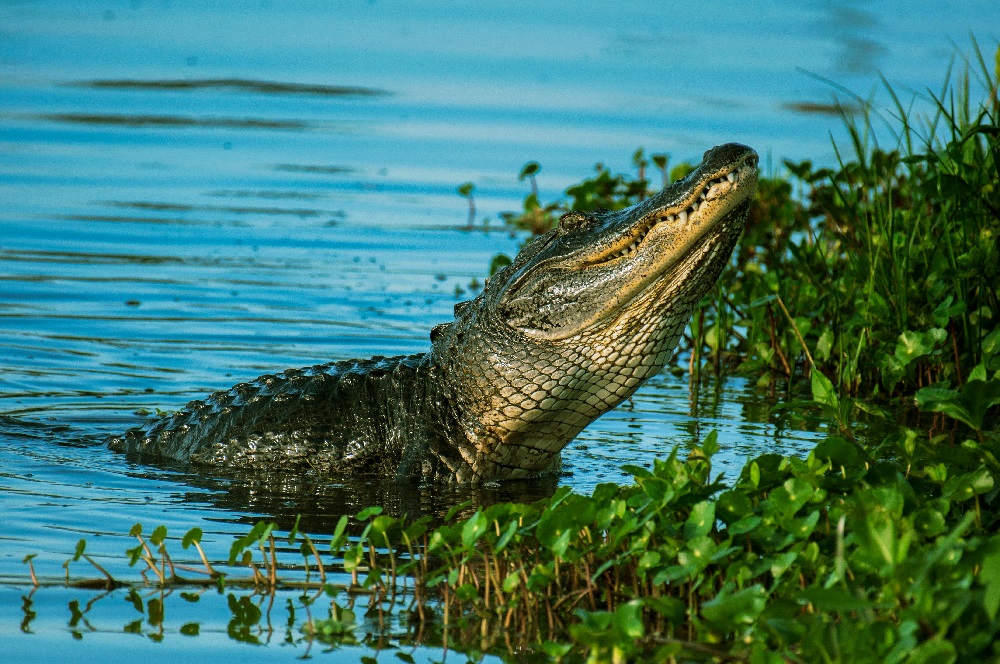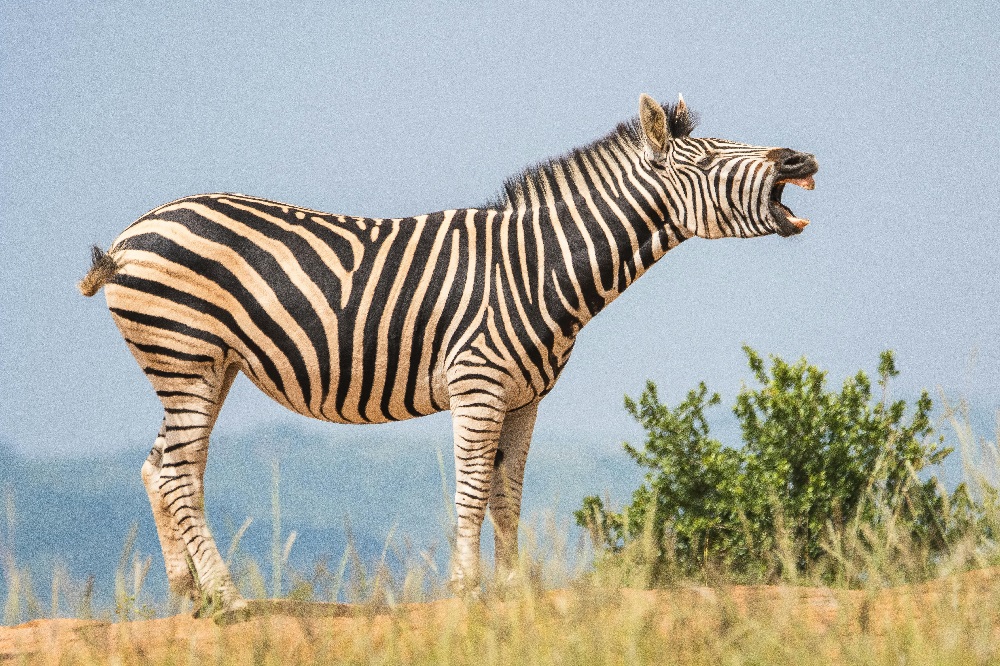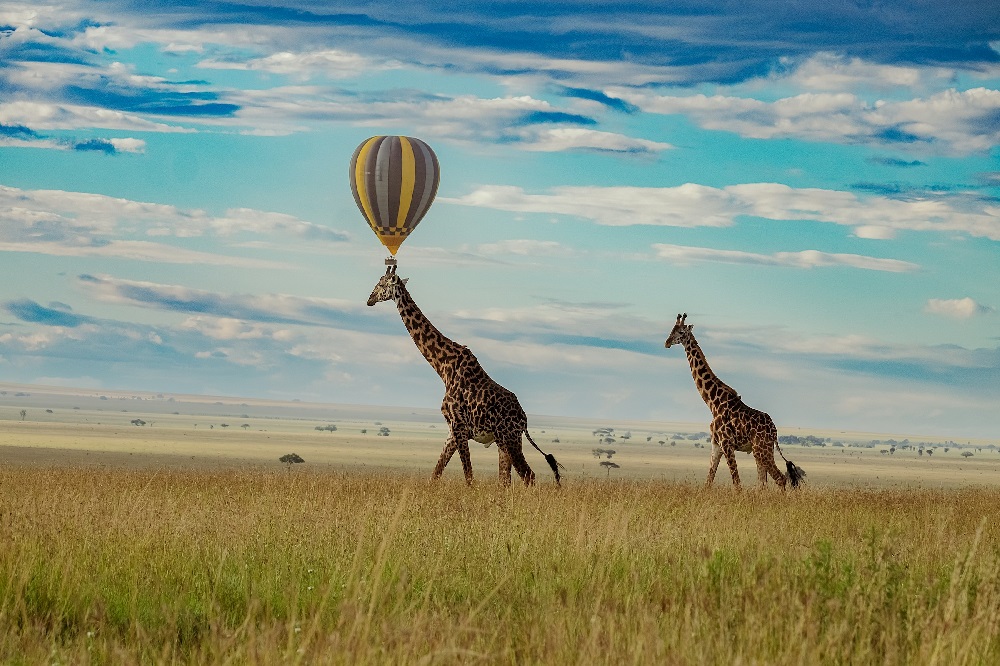Arusha National Park Safari
There are many reasons to include Arusha National Park on your Tanzanian itinerary! Arusha National Park is often overlooked by tourists visiting Tanzania. It offers an entirely different experience from other well-known parks and is home to numerous famous animals, including giraffes, elephants, and buffalo. The gigantic Mount Meru dominates the landscape here, and they are stunning. The flamingo-filled alkaline lakes, towering waterfalls, and lush rainforest make Arusha unique.
This is one of the few national parks in the world where you may see the endangered black and white Colobus monkeys, feel the exhilaration of a walking safari, or push yourself by scheduling a guided trip to the breathtaking summit of Mount Meru in Arusha.
Where is Arusha N.P. located?
Arusha is found in Tanzania, an East African nation. The park is in northeastern corner of Tanzania, close to Kenya.
Size of Arusha National Park
Even though Arusha National Park is small, it has a lot to offer adventurous travelers. Amazing landscapes, intriguing fauna, and a variety of activities. Additionally, it’s very simple to get to from Kilimanjaro International Airport and the neighboring city of Arusha.
What is Special in Arusha National Park
Visitors may see some amazing wildlife without going too far off the usual road at Arusha. It’s a fantastic place for tourists who are pressed for time but yet wish to experience a little bit of Tanzania. The contrast between the park’s unspoiled natural beauty and the busy city of Arusha, however, is what gives it a truly unique character. There is something quite potent about the closeness of animal and human habitats, and it almost feels like you are entering a parallel planet when you drive out of the city traffic and into the park.
The city’s bustle and commotion have vanished, and the magnificent landscape of Arusha has taken its place. The Momella Lakes shimmer in the distance, while Mount Meru towers over you. Herbivores of various sizes, including zebras, warthog families, herds of buffalo, and graceful giraffes, can be observed grazing leisurely in the neighboring swamplands.
A wide variety of birds and mammals, some of which are unique to Tanzania, are drawn to Arusha by its varied terrain. It is one of the best places to spot uncommon primates. Colobus and Blue Monkeys can be seen in the park too. The best of all? You may see these and many more creatures up close on walking safaris offered in Arusha
Black and White Colobus Monkey in Arusha N.P
These unusual primates are well-known for their opulent coats that resemble tuxedos, complete with fluffy tails and thick white beards. Interestingly, because colobus monkeys lack thumbs.
People and animals pursue the colobus monkeys, even though they spend the majority of their time in the trees. Humans used to hunt them extensively for their gorgeous fur, but now they are prey for chimps and leopards. Although their populations have recovered thanks to conservation initiatives, the creatures are still in danger because of habitat loss brought on by the clearing of forests to make way for highways, homes, and agriculture.
Most of their time is spent up in the trees than any other monkeys, so bear that in mind when you visit the park.
Mount Meru
Meru, which is only 43 miles from Mount Kilimanjaro, is thought to have been Africa’s highest mountain at one point. But millions of years ago, Mount Meru had a significant eruption that blew the volcano’s top off. Around 7,800 years ago, what remained of its pinnacle crumbled, giving it the characteristic horseshoe form. Although it is currently regarded as an active volcano, the last modest eruption took place in 1910. These days, a lot of people go hiking on Mount Meru. It offers an excellent acclimatization climb for anyone wishing to climb Kilimanjaro because of its commanding height. It’s also a fantastic substitute for anyone who wants to see the savannah from above without really climbing Kilimanjaro.
Momella Lakes in Arusha N.P
Within Arusha National Park, there are seven shallow alkaline lakes known as the Momella Lakes. The lakes receive water from subsurface streams and rainfall, and all have unique mineral, which support a remarkable variety of fauna.
The Momella Lakes are a great place to see wildlife, but because of their extreme alkalinity, no animals can drink from them. Among the water birds that visitors can expect to see are flamingos, zebras, and hippos.
The greatest way to experience the Momella Lakes is by a canoe Safari, even though many wildlife drives stop by the surrounding locations.
History of Arusha N.P
Millions of years have gone into creating the region that now comprises Arusha National Park and its environs, and in many respects, it is still being built.
The Great Rift Valley and a huge portion of the terrain were formed when tectonic plates began to separate about 20 million years ago. In the distant past, when Mount Meru erupted around 250,000 years ago, Momella Lakes were created.
More recently, a group of farmers and pastoralists from Kenya moved to Arusha in the late 18th and early 19th centuries, establishing the community. Although they are connected to the Maasai, these immigrants are said to be different from them. These tribes, known as the Arusha, frequently took part in conflicts near Mount Kilimanjaro and maintained a social structure akin to that of their contemporaries.
Tanzania National Parks, established by the 1959 Tanganyika National Parks Ordinance, is currently in charge of overseeing Arusha National Park.
Animals in Arusha
The largest giraffe population in Tanzania is found in Arusha National Park. Other primates include: buffalo, warthogs, zebras, elephants, leopards, bushbucks, and hippos. The park also boasts a variety of bird species, including the African fish eagle, grey-crowned cranes, and flamingos.
Main Animals in Arusha
The largest giraffe population in the world may be found in Arusha National Park. The Giraffe Conservation Federation estimates that there are 462 giraffes in Arusha National Park, meaning that there are almost 3.5 giraffes every square kilometer!
Giraffes may be easily spotted as they lumber through the park because of its steep topography. I promise you that nothing compares to witnessing a giraffe’s graceful neck emerge from a dense thicket. Particularly if they number in the dozens!
Large flamingo gatherings are another reason for the park’s fame. You might encounter hundreds at Momella Lakes, depending on the season. Since the flamingos prefer to gather in big numbers during the dry season, which runs from June to October, this is the greatest time to watch them.
Rare Animals in Tarangire
Leopards and red duikers are among the rarest creatures seen in Arusha National Park. Even though there are a good number of these animals in the park, it might be challenging to locate them because of the thick foliage and their elusiveness. Elephants and cheetahs are also extremely uncommon in this area. Since cheetahs prefer wide savannah to forests, it may surprise you to hear that they may be found in Arusha. Sightings of cheetahs do happen occasionally, though. Although they are common in Serengeti and Tarangire, elephants are uncommon here. Fewer than 200 of them live in the park, and they are rarely spotted.
Are there Big Five in Arusha N.P
The Big Five are not found in Arusha National Park because there are no lions or rhinos there.
The park’s last known lion sighting occurred in 1998. The park’s closeness to places with a high population density is the main cause of this absence.
The only Big Five animals that are frequently sighted in Arusha National Park are buffalo, while elephants and leopards are difficult to spot.
Even without lions, Arusha is still a worthwhile trip. From the tall giraffe to the small dik-dik, there are a lot of other amazing animals here. And Arusha is renowned for its stunning scenery in addition to its animals, making it a worthwhile destination.
Birdwatching in Arusha N.P
The Momella Lakes in Arusha National Park make an excellent location for birdwatching.
Bird species found in Arusha N.P include: Lesser and greater flamingos, kingfishers, eagles, nightjars, cranes, jacanas, collared palm thrush, brown woodland warbler, and many more.
A canoe safari is the greatest way to see the park’s bird species because they gather near the lakes.
November through April, when the environment is lush and there is more frequent rainfall, is the ideal time of year to watch birds in Arusha and throughout Tanzania. The birds have colorful plumage and breed at this time.
Wildlife Conservation in Arusha N.P
Arusha National Park was affected greatly during the height of poaching, just as a large portion of Africa.
Widespread killing appears to be done, and for more than a century, Arusha National Park has made wildlife conservation a top priority. Park officials have reintroduced giraffes, established anti-poaching patrols, and restored and safeguarded populations of black and white colobus monkeys.
Arusha National Park strives to stop deforestation and unsustainable farming methods while fostering sustainable tourism, economic growth, and education in nearby communities to stop further environmental deterioration.
Weather in Arusha N.P
Because of its higher elevation, Arusha National Park enjoys a comparatively pleasant temperature.
During the dry season, you can anticipate plenty of sunny skies and temperatures that often linger around a very pleasant 19 degrees Celsius. The temperature drops to about 9 degrees Celsius at night, which is the ideal temperature to curl up with a warm blanket before falling asleep!
During the rainy season, the temperature rises somewhat, reaching about 11 degrees Celsius at night and 23 degrees Celsius during the day.
There are typically brief afternoon rains in November and December. The wettest months are March through May, when it’s likely to rain every day. If this is your only opportunity to visit the park, don’t give up; it doesn’t rain all day, and the weather patterns frequently bring with them unusual creatures!
Best Time to Visit Arusha N.P
There are long rains from March to May. In the Serengeti, wildebeests start to cross the Grumeti River at the end of spring. Flights, hotels, safaris, and vehicle rentals are usually at their most affordable.
Travelers opt to go to northern Tanzania from June to mid-October to witness the Wildebeest Migration, which occurs when the wildebeest cross the Mara River, with crocodiles. This is the finest time of year to watch all types of wildlife since the foliage has died back, making them easier to notice, and because there isn’t any rain, animals gather near water sources. It’s also referred to as the long dry season. But be prepared for skyrocketing costs and a large number of people at every park. I still believe that now is an excellent time to visit, especially in September when there aren’t as many people.
Things slow down in the second half of November as the brief showers begin. In the Serengeti, the birthing season for a variety of species starts when the wildebeests return across the Mara River. During this period, you will witness large cats stalk their prey.
Many migrating birds return towards the end of December, making it the ideal time of year to go birdwatching at Momella Lakes.
Is the Park Crowded
Because of this, you won’t be mobbed by safari cars while hundreds of tourists snap pictures of the same few animals, as in many other national parks. This, in my opinion, is a major attraction to Arusha National Park since it adds to the experience’s sense of wonder and tranquility.
Approximate Dates One Can Spend in Arusha N.P
Arusha National Park, being relatively small and easily accessible from the city of Arusha, makes it easy to view the main sights and even fit in a few activities in a single day.
If you’re short on time, you can even visit a lot of the park in a half day (for example, if you’re only staying in Arusha for one night before or after a flight). For most people, though, this might feel a bit hurried, so I would suggest setting up a whole day to explore the park.
Arusha National Park Safaris
- Little Serengeti
The Little Serengeti is situated close to the park’s southern entrance, just west of the Ngurdoto Crater. This little savannah area, also called Serengeti Ndogo, is the only location in Arusha National Park where plains zebras may be seen. Buffalo, giraffes, and other huge herbivores can also be found here.
- Little Ngorongoro Crater
Ngurdoto Crater lies in the southeast corner of Arusha National Park. The crater is about 300 meters deep. This caldera was formed by a long-gone volcano, yet it left behind dense forests and an evergreen swamp encircled by jagged, rocky cliffs. Because of its abundance of wildlife, it is frequently referred to as the Little Ngorongoro Crater.
Because of the crater’s extremely soft floor, game drives cannot be conducted there like they can in other parts of the park. On the other hand, you can stop at one of the six vantage spots on the crater’s rim or take a walking safari around the crater floor.
- Mommella Lakes
The seven tiny lakes that make up the Momella Lakes were all created by depressions in the drying mud. These consist of Tulusia, Kusare, Rishateni, Lekandiro, El Kekhotoito, Big Momela, and Small Momela.
Because of their somewhat variable mineral and algae contents, the lakes all draw distinct kinds of creatures and have slightly different colors, ranging from green to turquoise.
Arusha National Park is the best area to go bird watching because of the variety of birds that visit the lakes.
Animals can frequently be seen on the lake margins, although they do not drink from the lakes because of their high alkalinity.
- Tululusia Waterfall
Tululusia Waterfall tumbles down the northeastern slopes of Mount Meru deep within the national park. The waterfall, which is surrounded by lush flora and creeping tree roots, is around 28 meters high and backs into a rocky grotto. Red-winged starlings now make their nests on the sheer rock walls beside the falls, adding to the fanciful ambiance.
During a walking safari, standing under its cold spray is the ideal method to stay cool. On my route to the falls, I even noticed buffalo grazing by a woodland stream and a family of warthogs. What could be more enchanted?
From Momela Gate in the park’s north, it’s a short stroll to the waterfall. If you intend to ascend to the top of Mount Meru, you might want to save this for the walk, as it is the same path that hikers follow to get there!
You may be able to spot buffalo, warthogs, and giraffes on the climb to the waterfall. It is advised to avoid going during the rainy season because the intense downpour may make it difficult to see. In addition to the walking and conservation fees, you will also need to pay for entry permits for private vehicles to access the park.
Wildlife and Natural Disaster
Because of the park’s low number of predators, it is one of the safer places to go on a walking safari. An armed ranger will accompany you on a walking safari, giving you a great deal of peace of mind as you explore the area on foot. Although buffaloes are the most dangerous animals to encounter, the guides are well aware of their behavior and know how to avoid them. As a final option, the rifle is used to fire “warning” rounds to frighten the buffalo away.
Natural calamities or flooding are not a danger in Arusha National Park. I would recommend traveling between mid-March and mid-May, when the rains are at their lowest, to reduce your chances of experiencing any floods.
Health and Diseases
For many tourists, malaria and yellow fever are the main concerns. Getting vaccinated against yellow fever before traveling is not only possible, but it is frequently advised or necessary. To avoid getting the disease, you can also use anti-malarial drugs. If this is on your mind, keep in mind that because of its high elevation, Arusha National Park is a comparatively low-risk location. However, strongly advise discussing pharmaceutical alternatives with your doctor
Nature Walks in Arusha N.P
Arusha National Park offers a Nature walk. Due to a lack of predators in the park, these are completely safe. Even though it’s doubtful that you’ll encounter a lion, you can still see a lot of other creatures while walking, which makes for a unique experience!
Walking safaris are conducted on a variety of natural trails. When it comes to beauty, fauna, and attractions, each has something special to offer. Walking safaris can take more than three hours, so be sure to pack lots of drinks, good shoes, and sunscreen.
Hiking Mount Meru in Arusha N.P
Beginning with lush rainforests at the base and ending with high alpine territory as you approach the peak, this strenuous journey leads hikers through an extraordinarily varied landscape. As the cherry on top, the slopes of Mount Meru provide sanctuary to buffalo, baboons, warthogs, and other creatures in addition to tired trekkers. If you’re lucky, you might run into a furry companion on the trail!
Mount Meru, also referred to as a “warm-up” for Mount Kilimanjaro, is a great method to prepare your climbing muscles for the ascent of Kili! The Meru peak itself, however, is an excellent trekking objective.
Hot air Balloon in Arusha N.P
In Arusha National Park, hot air balloon rides are not permitted. Later on in your journey to the neighboring Serengeti National Park, though, you may simply make arrangements for this.
Even if waking up in the early hours of the morning isn’t always enjoyable, the flight ends with a champagne brunch and lots of opportunities to see animals. Elephant herds, lion prides, and even the famous wildebeest migration can all be spotted!
Horse Riding in Arusha
The news that you can go on a horseback riding safari in Arusha National Park will excite all equestrians. You may observe animals from the comfort of your saddle in one of Tanzania’s few national parks.
Both novice and expert horseback riders are welcome to participate as you wander over immaculate trails and pass a variety of animals. Safaris with horseback riding often run a few hours, giving you plenty of time for a game drive or canoeing on Small Momella Lake.
Photography in Arusha N.P
Imagine this famous image of giraffes walking through a mountainous area with lush trees all around them, with Mount Meru towering over them.
Arusha National Park is a wildlife photographer’s paradise, to put it simply! The diverse range of birds and herbivores offers amateur photographers a wealth of ideas, and the breathtaking landscape is the ideal setting for a picture safari.
Is Arusha N.P. worth
Arusha National Park is worthwhile after having been to many of Tanzania’s national parks.
The abundance of animals makes them simple to spot, despite the park being much smaller than the majority of the other parks on the Northern Circuit. Because there aren’t many predators, the big herbivores are also more relaxed, which makes it simpler to take amazing pictures of them!
For me, the scenery was yet another highlight. Seeing giraffes in the bush is an unforgettable experience, and the verdant jungle is very different from other Tanzanian parks. This little area of wildness is made much more magical by the Momella Lakes and waterfalls.
Additionally, Arusha National Park provides a vast array of activities. Even while safaris in the Serengeti and Ngorongoro are breathtaking, spending many days sitting in the back of a jeep might get a little monotonous. In the meantime, you may get your body moving again in Arusha by taking a canoe ride or a day trek.
Lastly, one of the factors that makes Arusha National Park even more worthwhile is the fact that it doesn’t receive as many visitors as Serengeti National Park. You may feel closer to nature and all of the amazing creatures in the park if there are fewer people there.

